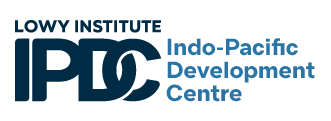Development priorities across the Pacific are changing, with new players and new financial instruments emerging to increase the scope and magnitude of funding required. The latest edition of the Lowy Institute Pacific Aid Map, released today, illustrates that Australia continues to be well placed to have a significant role in assisting the region, even as development partners and areas of focus shift.
Where Australia and New Zealand once led the way with efforts primarily emphasising governance and human development, the emergence of China as a major donor, particularly in the infrastructure space, has reshaped aid and development finance dynamics in the Pacific over the past decade.
Traditional donors, at times, have engaged in a game of “whack-a-mole” in a bid to counterbalance China’s investments. This was best exemplified by actions such as the Australian government support for the building of an underwater telecommunication cable network linking remote Solomon Islands communities to Honiara, and ultimately to Australia, following an expression of interest by Chinese-backed Huawei. The Pacific Aid Map shows that in 2008, infrastructure investments accounted for 14% of all development financing to the Pacific. By 2020, they accounted for a third.
But the past few years has also seen a seismic shift in the regional context, driven by the Covid-19 pandemic, global economic uncertainties and mounting geopolitical tensions. Pacific development financing will not revert to its pre-pandemic state.
And with climate change, the Pacific’s financing needs have only swelled. The region already faces the grim prospect of a “lost decade” in terms of development due to the pandemic, that intensifying environmental threats will worsen.
While the Pacific Aid Map reports that development financing flows to the Pacific have reached unprecedented levels recently – with $4.8 billion spent in the region in 2021 – this remains inadequate, both in terms of volume and the type available.
Official development finance has become increasingly dominated by loans. This can potentially add to the burden for the region. Loans accounted for 18% of the development financing mix in the Pacific in 2008. They represented almost 40% in 2021. The contrast is made even more stark given that total grant financing to the region has largely stagnated. This makes more urgent the question of how to sustainably meet the Pacific’s substantial financing needs.
China’s aid is shrinking at the same time. Having once been regarded as a major source of additional resources, Beijing has adopted a more targeted approach since the pandemic. China’s financing has gone from loud and brash, with its large infrastructure projects spread across the region, to a self-styled strategy of “small and beautiful”, financing more but less costly projects.
Australia, meantime, has substantially increased its engagement through infrastructure financing via the new Australian Infrastructure Financing Facility for the Pacific. Inaugurated in 2019 by the Morrison government, it had committed more than $784 million by 2022, increasing average Australian Pacific development infrastructure commitments by 77% and eclipsing the amount devoted to health and education financing in the Pacific.
Australia is also again providing budget support in the Pacific, a departure from what had been a shift away from this form of aid. Before Covid, Australia and other development partners had typically been cautious about offering extensive budget support, apprehensive about risks related to financial oversight and effectiveness. But the pandemic led to a surge in budget support operations, seen as an effective means to deliver rapid financial support at a time when international borders were closed, and travel was restricted.
The Pacific Aid Map shows how budget support transactions surged from an annual average of $374 million prior to the pandemic to $2.1 billion in 2020 and 2021. Australia provided A$650 million in budget support to Papua New Guinea in 2021, its largest-ever development operation at the time.
Again, however, a significant portion of infrastructure and budget support financing comes in the form of loans, which must be repaid with varying interest levels, rather than outright grants. This makes Australia the primary source of new lending to the region.
This trend is unfolding at a time when concerns about debt sustainability are mounting in most Pacific Island countries. The fear is not only about elevated debt levels and interest rates, but also the high susceptibility of the region to the consequences of climate change and disasters. In this context, the urgency of the climate crisis and the necessity for adaptation have gained prominence. As a result, development financing in the Pacific is increasingly focused on climate change.
In this changing landscape, Australia’s actions and decisions carry considerable weight. Development in the Pacific relies on forging a path that balances the need for financing with the imperative of sustainability.


